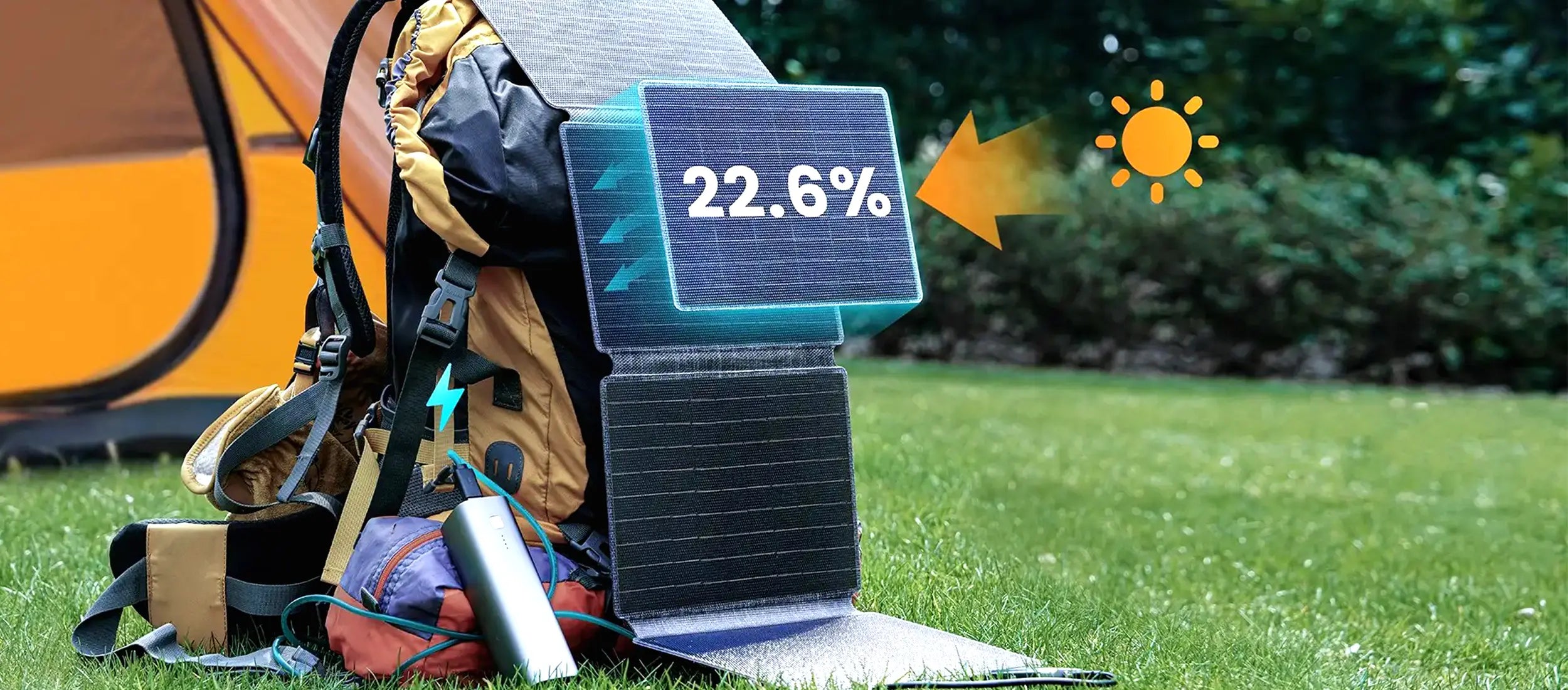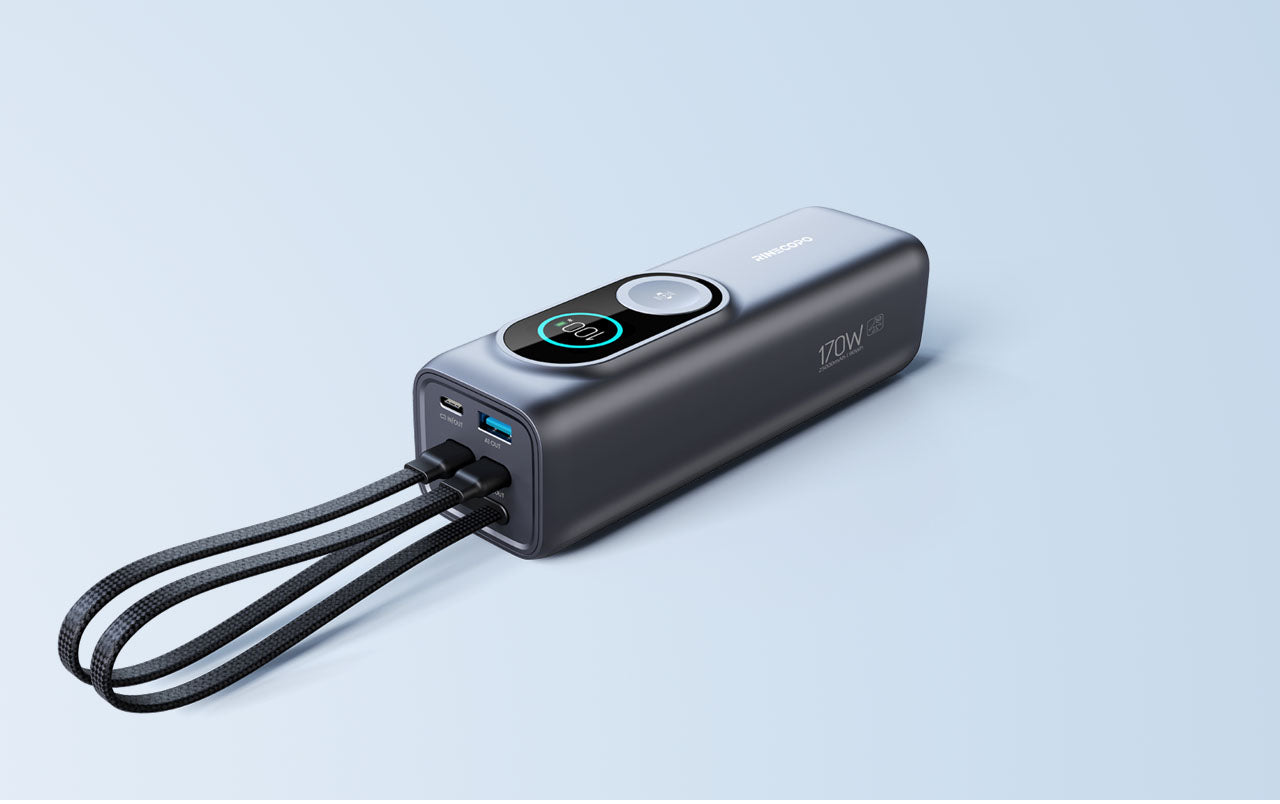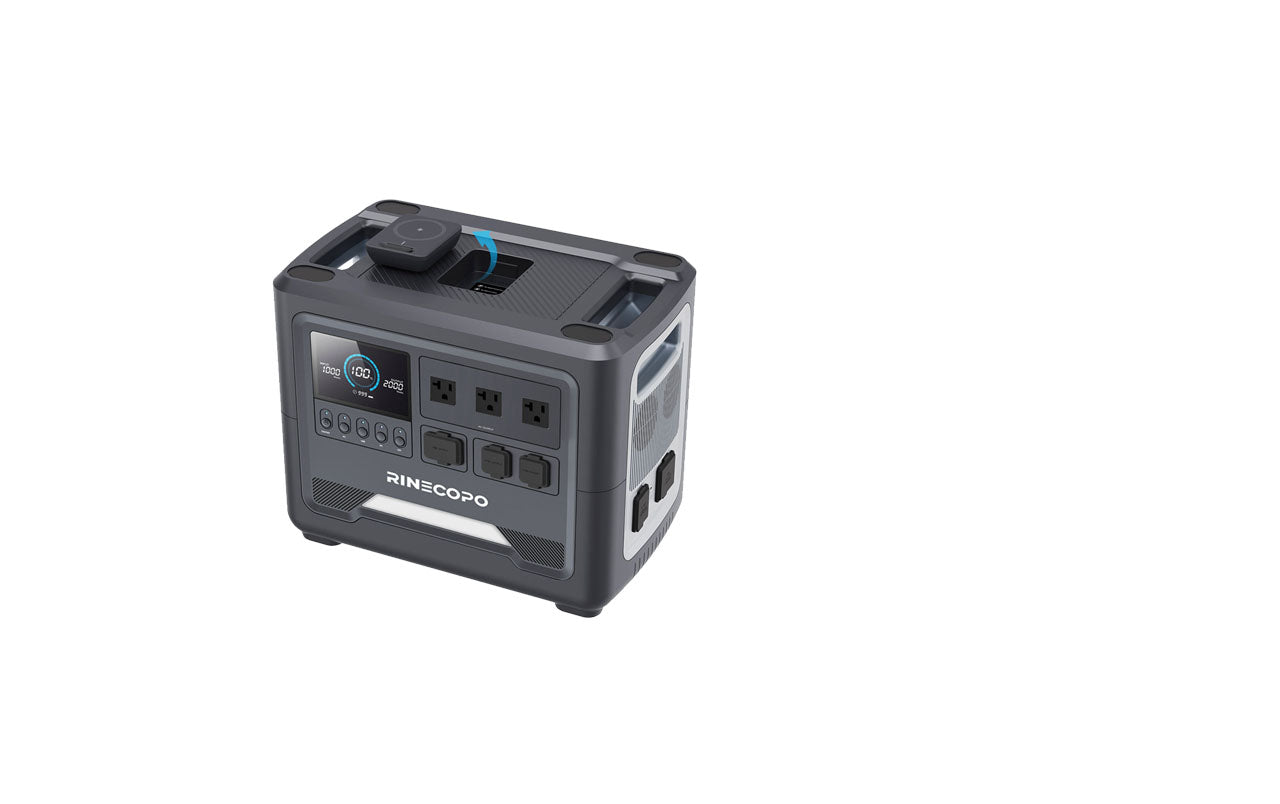
As sustainability and green energy become mainstream, portable solar panels are quickly gaining popularity.
These lightweight, versatile devices are not only perfect companions for campers and travelers, but also for anyone who wants to access clean power on the go.
In this guide, we’ll dive into the basics of portable solar panels—including how they work, their benefits, limitations, costs, efficiency, and tips for setup and maintenance. Ready? Let’s get started!
What Is a Portable Solar Panel?
A portable solar panel is a compact, foldable device that converts sunlight into electricity.
Designed for convenience, these panels are easy to carry and can quickly charge your devices whether you’re camping, road-tripping, or facing a power outage.
How Do Portable Solar Panels Work?
They operate just like traditional solar panels:
-
Photovoltaic cells capture sunlight → convert it into DC power
-
Through an external power station or inverter, DC can be converted into AC to power your electronics
Thanks to their flexibility, portable solar panels can charge small devices directly or be paired with a portable power station to create a small solar system.
Benefits of Portable Solar Panels
-
Lightweight & Flexible – Easy to carry for hiking, camping, and travel
-
Plug-and-Play – No complicated installation, simply unfold and use
-
Eco-Friendly – Harness renewable clean energy, reduce carbon emissions
-
Cost-Saving – One-time investment for long-term free power
Limitations of Portable Solar Panels
-
Limited Output – Not designed to power large household appliances
-
Weather Dependent – Performance drops in cloudy or rainy conditions
-
Higher Cost per Watt – Compact design and portability increase unit cost compared to fixed systems
Price & Efficiency
Portable solar panels typically cost between $50 – $500, with efficiency ranging from 15% to 22%.
Lower-watt models are budget-friendly but limited, while higher-watt versions provide more power but are bulkier.
Common Use Cases
✔ Camping & Hiking – Charge phones, flashlights, or radios in the wild
✔ RV Travel – Pair with a power station to run laptops, lights, or small appliances
✔ Beach & Fishing Trips – Keep your camera, drone, or speaker powered
✔ Emergency Backup – Provide energy during blackouts to keep communications online
Why Choose a 36W Portable Solar Panel?
Among all wattage options, 36W is considered the “sweet spot”:
-
More powerful than 20W, enough to charge multiple devices at once
-
Lighter and easier to carry than 60W, weighing under 2 lbs
-
Equipped with USB, USB-C, and DC outputs to cover most devices
Core Advantages of the RINECOPO 36W Portable Solar Panel
Compact & Travel-Friendly
Weighing less than 2 lbs, with a foldable design and durable carrying case, it fits easily into your backpack, RV, or boat—perfect for all types of outdoor adventures.
High Solar Conversion Efficiency
Delivers up to 23% conversion efficiency, ensuring reliable energy even in less-than-ideal sunlight. Whether you’re hiking, camping, or spending a day outdoors, you’ll always have green power on hand.
Smart Fast Charging
Features multi-protocol USB-C fast charging, supporting:
-
DCP (Apple, Samsung, BC1.2)
-
Qualcomm QC2.0/QC3.0
-
Huawei FCP, Samsung AFC
-
USB PD
No outlet needed—quickly recharge your phone, tablet, earbuds, camera, or power bank anytime, anywhere.
Multiple Ports for Versatility
In addition to USB-C, it includes USB-A and DC5521 ports, letting you power multiple devices simultaneously. Works great on its own or paired with a portable power station.
Rugged Outdoor Durability
Built with ETFE coating and IP67 waterproof protection, it resists heat, corrosion, and tough weather conditions. From blazing sun to sudden rain, it delivers consistent, reliable performance.
Expandable Design
Can be used standalone or combined with a RINECOPO Laptop Power Bank to create a mini solar system. Supports parallel connections for higher output—ideal for laptops, mini fridges, or fans.
Comparison: RINECOPO 36W vs Other Portable Solar Panels
| Feature | Entry-Level 20W | RINECOPO 36W | High-Power 60W |
|---|---|---|---|
| Output | 20W | 36W | 60W |
| Weight | 1.3 lbs | 1.9 lbs | 5.5 lbs |
| Ports | Single USB-A | USB-A + USB-C PD + DC | USB-A + USB-C + DC |
| Charging | Slow, phone only | Medium, phone/tablet in 2–4 hrs | Fast, supports laptops & devices |
| Portability | Excellent, but limited | Best balance: light + powerful | Bulky, not ideal for backpacking |
| Price | $50–80 | $100–150 | $200–300 |
FAQs
Q: Can it work on cloudy days?
A: Yes, though performance will be lower. Direct sunlight provides the best results.
Q: Is it waterproof?
A: Yes, with IP67 splash resistance. It can handle light rain but isn’t meant for full submersion.
Q: Can it charge a laptop?
A: Yes, when paired with USB-C PD output or a compatible power station.
Q: How long does it last?
A: With proper care, portable solar panels can last 10–20 years.
Q: How do I maintain it?
A: Keep the panel clean, avoid scratches, and store it dry when not in use.
Final Thoughts
If you’re looking for a solar panel that balances portability, efficiency, and durability,
the RINECOPO 36W Portable Solar Panel is your best choice.
Perfect for camping, road trips, RVs, or home emergency backup—
let the sun be your personal charging station anytime, anywhere. 🌞
Recent Posts
Blog Tags
How to Choose the Right Certified USB Cable for Your Power Bank
Choosing the right USB cable may sound trivial, but it directly impacts how well your power bank performs. The formula is simple: certification + correct wattage + shorter is better.
-
Smartphones & tablets → 60W short USB-C cable
-
Laptops → 100W or 240W certified USB-C with E-marker
-
Cars & legacy devices → USB-A to USB-C with 56kΩ resistor
The Best Smart Power Bank for City Commuting and Weekend Adventures
To choose a power bank suitable for city commuting and light outdoor use, focus on six key aspects:
-
Design Aesthetics: Attractive, comfortable, portable, and high-quality materials make your power bank a stylish daily accessory.
-
Intelligent Management: Multi-device recognition, precise battery display, and smart temperature control ensure safer, more efficient charging.
-
Fast Charging: Multi-protocol, two-way fast charging, and high output power save precious time.
-
Safety Protection: Multiple safety layers, premium battery cells, and thoughtful details keep devices and users secure.
-
Practical Use Cases: Commuting, office, light outdoor, and travel scenarios—design matches real-life needs.
-
Brand & Selection Advice: Choosing a brand like Rinecopo, with high capacity, intelligent display, and multiple fast-charge ports, is a smart choice for everyday and light outdoor use.
Maximize Your Portable Power Station: 5 Smart Hacks to Keep It Performing Like New
-
Hack 1 – Speak Its “Language”: Understanding capacity (Wh), power output (W), and input specifications is the foundation for precise energy planning and avoiding overload.
-
Hack 2 – Charge Like You Care for Its Health: Avoid overcharging or deep discharges, use the original charger, and charge within an appropriate temperature range to protect battery health.
-
Hack 3 – Adopt Elite Power Habits: Manage power loads, minimize standby consumption, and prioritize devices based on battery level to maximize usage efficiency per charge.
-
Hack 4 – Follow the “Sleep Mode” Rule for Long-Term Storage: Store in a cool, dry place at 50%-60% charge, and perform periodic calibration cycles to ensure your station wakes up fully energized.
-
Hack 5 – Trust the Brand’s Expertise: Carefully reading and following the professional guidance in the user manual is the most reliable way to unlock your device’s full potential and avoid operational mistakes.





